Un Periódico Diferente / A Different Kind of Newspaper


Un Periódico Diferente / A Different Kind of Newspaper




A Caring Heart Nursing Services llevó a cabo una actividad de beneficio comunitario, la Feria de Salud y Bienestar, el sábado 24 de agosto de 2024 en el salón comunitario de la Biblioteca Pública de Holyoke. El exitoso evento fue organizado por Lucila (Lucy) Sánchez, Executive Relationship Director de la agencia.
La actividad fue patrocinada por 90 Meat Outlet de Springfield, la Biblioteca Pública de Holyoke y El Sol Latino. Esta reunió a organizaciones que ofrecen una variedad de servicios comunitarios, de salud y productos naturales en la región.
Entre las organizaciones y negocios que presentaron sus servicios y productos se encontraba la organización comunitaria, Nueva Esperanza Inc., Hoy en día, Nueva Esperanza, Inc. es considerada una pionera entre los programas comunitarios que celebran la cultura puertorriqueña/afrocaribeña en Holyoke. Ascentria Care Alliance, cuya meta es romper el ciclo de la pobreza y crear comunidades fortalecidas, también presentó sus servicios en la feria.

Nuestra Casa Adult Day Health Care Center, organización dedicada a proveer cuido compasivo y apoyo a los adultos mayores de nuestra comunidad, dijo presente en la actividad. Su centro de cuidado se funda en los principios de dignidad, respeto y excelencia en los servicios, buscando promover la independencia y el bienestar de sus participantes. Otros participantes incluyeron a Rewarding Insurance Agency, la agencia de seguros de dueños latinos más completa de toda la región. La agencia ofrece seguros de vida, salud, auto, hogar y negocio en un mismo lugar; D’Coco Artisan, un pequeño negocio que se dedica a la elaboración de jabones artesanales naturales; y el Supplemental Nutrition Assistance Program (SNAP)

A final del evento se realizó un gran rifa con alrededor de 50 premios que incluían certificados de regalo o gift cards de 90 Meat Outlet (Springfield), Smoothie & Juice Bar Health Food Restaurant (Springfield), Crave Food & Catering (Holyoke), Lids LiveWell & Co. (Chicopee), Sire Juice, el Payaso “Kewii or Luigy” con face painting, globos y música.
Para mas información sobre el evento o sobre los servicios que ofrece A Caring Heart Nursing Services puede comunicarse con Lucila (Lucy) Sánchez, Executive Relationship Director al 413-455-3405 o por correo electrónico lsanchez@achnursingservices.com
2 Foto del Mes /Photo of the Month
Remembering our September 2009 Edition
Portada / Front Page
A Caring Heart Nursing Services Organiza Feria de Salud
3 “Latinos Against Project 2025” Coalition Launches Bilingual Campaign About the Threats of Project 2025
4 Governor Healey Signs Most Ambitious Legislation to Address Housing Costs in State History
5 STCC Announces Three New Members Named to the Board of Trustees
6 Opinión / Opinion
Ending Citizens’ Inertia: Community Participation
7 Educación / Education
Estudiante Doctoral e Investigador Docente de UPR Río Piedras Reciben Prestigiosa Beca Gilliam
8 Literatura / Literature
Con la Música a Otra Parte: Severa
11 Libros / Books
The Puerto Rican War - A Graphic History
La Presencia Haitiana en Puerto Rico 1791-1850
12 Crossing Digital Fronteras: Rehumanizing Latinx Education and Digital Humanities
Sin Padres, Ni Papeles
13 Música / Music
3ra Fiestas Patronales de Holyoke 2024
Al rescate de nuestras ancestras
16 Deports / Sports
Springfield Old Timers Softball League
Editor Manuel Frau Ramos manuelfrau@gmail.com 413-320-3826
Assistant Editor Ingrid Estrany-Frau
Art Director Tennessee Media Design
Business Address El Sol Latino P.O Box 572 Amherst, MA 01004-0572
Editorial Policy
El Sol Latino acepta colaboraciones tanto en español como en inglés. Nos comprometemos a examinarlas, pero no necesariamente a publicarlas. Nos reservamos el derecho de editar los textos y hacer correcciones por razones de espacio y/o estilo. Las colaboraciones pueden ser enviadas a nuestra dirección postal o a través de correo electrónico a: info@elsollatino.net.
El Sol Latino welcomes submissions in either English or Spanish. We consider and review all submissions but reserve the right to not publish them. We reserve the right to edit texts and make corrections for reasons of space and/or style. Submissions may be sent to our postal address or via electronic mail to: info@elsollatino.net.
El Sol Latino is published monthly by Coquí Media Group. El Sol Latino es publicado mensualmente por Coquí Media Group, P.O Box 572, Amherst, MA 01004-0572.

WASHINGTO, D.C. | AMERICA’S VOICE | August 27, 2024 — Representatives from SEIU, America’s Voice, the Labor Council for Latin American Advancement (LCLAA), People’s Action, Poder Latinx, UnidosUS Action Fund, and Latino Victory Foundation launched the “Defendiendo Nuestro Futuro, Latinos Against Project 2025” campaign, first reported on Axios, to warn and mobilize Latino communities about the imminent dangers posed by Project 2025. The website can be found at https://proyecto2025.com/
On a press call, representatives of the organizations highlighted the significance of the bilingual campaign to educate and inform Latino voters on the consequences of Project 2025 and the disturbing policy proposals it has precipitated across the country.
Speakers emphasized the severe harm that Project 2025 and similar policies would inflict on the interests of the Latino community, from education, cost of living, healthcare, and the economy.
“The SEIU is the largest union of care and service workers nationwide and the largest union of immigrant workers. Most of our members are frontline workers, including caregivers, cleaners, food service workers, and airport workers, who play a crucial role in our society and economy,” said David Huerta, President of the SEIU CA State Council and SEIU-USWW. “The proposed policies in Project 2025 are dangerous and extreme and primarily benefit wealthy corporations. Project 2025 jeopardizes the gains workers and unions have made during the Biden-Harris Administration. We cannot build a thriving economy if we do not protect Latino workers from exploitation and marginalization.”
“Project 2025 lays out an extreme and cruel policy agenda harmful to immigrant communities,” said Vanessa Cárdenas, Executive Director of America’s Voice. “The ‘Latinos Against Project 2025’ bilingual campaign will be an invaluable tool to shine a light on policies that would separate American families, deport Dreamers, and wreck the economy for working people. No matter how much its supporters and the authors try to deny their own nearly 1,000-page playbook, we must remain vigilant against Project 2025’s inhumane objectives against the Latino community and make sure the white nationalist vision does not become a reality for Americans and Latino communities.
“LCLAA stands united with our partners and proudly supports this initiative because we recognize that Project 2025 is not just a threat–it’s a direct assault on the hard-won progress of Latino workers and our communities. This goes beyond the individual policies; this playbook aims to dismantle the very systems that uplift and empower nuestra comunidad,” said Evelyn DeJesus, National President of
LCLAA and Executive Vice President of AFT. “We will not sit idly while our hard-earned rights are stripped away. We will fight with unwavering resolve to defend our future. Together, we are stronger, and together we will prevail. ”
“Project 2025 is a troubling blueprint for an administration that aims to strip away many of the vital benefits and protections that Latinos currently enjoy. It’s beyond conservative, it’s flat out radical and will stop at nothing to dismantle essential rights, liberties and policies, threatening our present and future, as well as our democratic institutions,” said Yadira Sánchez, Executive Director of Poder Latinx.
“We are at a critical juncture where our collective action is needed more than ever. To counteract this potential threat and prevent the rise of authoritarianism, it’s crucial that we come together, vote decisively, and protect the progress we’ve made,”
“Project 2025, is a meticulous 922-page plan designed to terrorize communities, tear families apart, and trample on our rights. It threatens children, caregivers, and communities, deporting millions, and forcing American families to live without healthcare, housing, and food. Together, we are mobilizing to choose a different future,” said Sulma Arias, Executive Director of People’s Action. “Project 2025 circumvents Congress and the courts to impair citizens and injure immigrants. From Green Card seekers, to work visa and temporary status holders, from undocumented taxpayers to refugees and asylum seekers, he’ll menace children, caregivers, and communities. After it rips work permits and deportation protections away from DACA-holding DREAMers, and forces families, seniors, and kids living in poverty to go without healthcare, housing, and food, Project 2025 will deport millions. But it’s not just immigrants who will suffer under Project 2025. Citizenship won’t come with access to contraception, fertility treatments, or reproductive freedom. It won’t offer protection from unregulated toxins in the air, water, and soil, or stop emboldened polluters from accelerating climate change. The only antidote to any of this is organizing. We need to get out the vote to elect champions of a better vision for tomorrow. And then we need to organize to build a country that works for all of us.”
“Project 2025 embodies everything that stands in the way of progress for our communities. From destroying economic opportunity for hard-working Americans, including Latinos, to threatening our education system, access to healthcare, immigration reform, and decimating the social safety net that millions rely on – Project 2025 is wrong for Latinos and wrong for America,” said Katharine PichardoErskine, Executive Director of Latino Victory Foundation. “At Latino Victory, we are proud to stand alongside our partners, “Defendiendo Nuestro Futuro,” as this campaign is not just a call to action; we are clearly defending our families, values, and future. Together, we will mobilize, educate, and empower Latino voters to protect our rights and ensure a brighter, more equitable government for future generations.”
“Project 2025 poses an unprecedented threat to our civil liberties, particularly aiming to strip away the fundamental rights that Latinos and other marginalized communities have fought so hard to secure,” said Rafael Collazo, UnidosUS Action Fund Executive Director.
continued on page 5
BOSTON, MA | OFFICE OF GOVERNOR MAURA T. HEALEY | June 6,
2024 – Governor Maura Healey signed into law the most ambitious legislation in Massachusetts history to tackle the state’s greatest challenge – housing costs. The Affordable Homes Act and related initiatives will support the production, preservation and rehabilitation of more than 65,000 homes statewide over the next five years. It is the largest housing bond bill ever filed in Massachusetts, at over triple the spending authorizations of the last housing bill passed in 2018.
The historic legislation authorizes $5.16 billion in spending over the next five years, along with 49 policy initiatives to counter rising housing costs caused by high demand and limited supply. Key spending authorizations and policy changes include allowing accessory dwelling units, an unprecedented investment in modernizing the state’s public housing system, boosts to programs that support first-time homebuyers and homeownership, incentives to build more housing for low to moderate-income residents, support for the conversion of vacant commercial space to housing and support for sustainable and green housing initiatives.
“The Affordable Homes Act creates homes for every kind of household, at every stage of life, and unlocks the potential in our neighborhoods. Today we are taking an unprecedented step forward in building a stronger Massachusetts where everyone can afford to live,” said Governor Healey. “What the Affordable Homes Act represents is our ability to come together and address our toughest challenges. I am deeply grateful to our partners in the Legislature for their leadership and look forward to the work ahead in implementing this law and making affordable homes a reality for every resident of our state.”
“Housing plays a critical role in supporting our local economies and this bill will make a meaningful difference in helping Massachusetts residents to live, work and stay here in the state that they love,” said Lieutenant Governor Kim Driscoll. “We went big with the Affordable Homes Act, and it received incredible support from members of the Legislature, advocates, employers, business leaders and health care professionals. Together we understand the importance of investing in housing in order to remain a competitive state.”
In addition to the unprecedented level of spending authorizations, the Affordable Homes Act creates key policy initiatives, including allowing accessory dwelling units under 900 square feet by right on singlefamily lots. Often referred to as in-law apartments, accessory dwelling units can be attached or detached from a single-family home and often take shape as a basement or attic conversion, a cottage in a backyard or a bump-out addition to a home. This new policy replaces a patchwork of zoning regulations across the state with a uniform law that allows homeowners on single-family lots to add these small units without needing a special permit or variance unless they want to add more than one. Construction of ADUs is still subject to local building codes. The Healey-Driscoll Administration estimates that between 8,000 and 10,000 ADUs will be built across the state over the next five years due to passage of the law.
Another significant policy action enacted with the Affordable Homes Act is the creation of a Seasonal Communities designation. The Seasonal Communities designation is the first step in developing
unique tools for communities with substantial variation in their housing needs due to seasonal employment in places such as Cape Cod, the islands, and the Berkshires. A Seasonal Communities Coordinating Council, which the Affordable Homes Act also creates, will develop a framework for these tools.

Governor Healey Signs Most Ambitious Legislation to Address Housing Affordability in State History/ Mass.Gov
“From ADUs to seasonal communities, this administration in partnership with the Legislature has now adopted some of the most forward-looking and proven practices to not only meet this moment, but also set a course to meet the housing needs of our communities for years to come,” said Housing and Livable Communities Secretary Ed Augustus. “The passage of the Affordable Homes Act is a monumental step toward building a Massachusetts where everyone – from our talented workforce and families to our retirees – can afford to live and thrive.”
In addition to new policy initiatives and spending authorizations for housing, the Affordable Homes Act authorizes a record $2 billion for the repair, rehabilitation and modernization of the state’s public housing portfolio. Massachusetts has the largest public housing portfolio in the U.S. with more than 43,000 units, but it has been underfunded for decades.
“Public housing is a vital piece of our housing portfolio here in Massachusetts,” said Deputy Secretary of Housing and Livable Communities Jennifer Maddox. “It provides access to affordable housing for thousands of residents while also serving as one of our best defenses against homelessness. But for too long it has suffered from underinvestment. With the passage of this bill, we say to those residents, you deserve to live with dignity in a community you can be proud of.”

SPRINGFIELD, MA | SPRINGFIELD TECHNICAL COMMUNITY
COLLEGE | August 8, 2024- Springfield Technical Community College Board of Trustees welcomed three new members appointed by Gov. Maura Healey. Joining the board are Dr. William A. Dávila, Michael Knapik and Anthony Moore Jr.
The 11-member Board of Trustees establishes policies, carries fiduciary responsibility and oversees the president, who is tasked with all college operations as well as the administration of strategic priorities. Nine of the trustees are appointed by the Massachusetts governor, one trustee is elected by the STCC student body and one trustee is elected by the Alumni Association/Network.
Dr. John B. Cook, STCC president, who is beginning his ninth year at the college, said, “I am so pleased to welcome our new Trustees. This is a group of wonderfully talented community leaders.
“Bringing to the table their insight of public higher education, the college now also benefits given their unique wisdom and deep knowledge of industries, sectors and community needs,” Cook said.
A Springfield native and former STCC student, Dr. Dávila is vice president of diversion, shelter and housing for the Center for Human Development (CHD). He has decades of experience at nonprofit agencies as a practitioner, manager, and senior-level executive administrator.

He has served on the boards of the Food Bank of Western Massachusetts, New England Public Media and the Massachusetts Council on Gaming & Health, and was also recently appointed to the Board of Directors for the MLK Jr. Family Services organization. Dávila’s mother graduated from STCC in the 1980s.
“STCC was the school that gave me a second chance to get serious about my academic career and go on to successfully pursue a bachelor’s, master’s, and doctorate,” Dávila said. “I look forward to working with Dr. Cook and my fellow trustees on supporting and building on the college’s mission of providing academic and professional opportunities to our community.”
Knapik, a Westfield resident, is vice president of government and community relations at Baystate Health. He will serve as Board Chair.

Knapik is well known for his public service, which included two terms as a state representative for the 4th Hampden District and 18 years as state senator for the 2nd Hampden-Hampshire District. Knapik was also director, Office of the Governor, for the Western Massachusetts Regional Office, and Executive Director of Advancement, Alumni and University Relations for Westfield State University.
“I am grateful for the opportunity Governor Healey has afforded me with this appointment to the Board of Trustees at Springfield Technical Community College,”
Knapik said. “I have profound respect for the important work STCC performs in our region and am keenly aware of the partnerships they engage in throughout western Massachusetts. I know from my past relationship with STCC, the college is well positioned to meet the challenges of the times. I look forward to helping them fulfill their mission of transforming the lives of their students and thereby strengthening the families of our region.”
Moore, director of membership programs for the Black Economic Council of Massachusetts (BECMA), is an STCC graduate (Class of 2015) and Springfield resident. He previously worked for the Dunbar Community Center in Springfield, the Urban League of Springfield, as well as the City of Springfield. He has also served as a MassDevelopment Transformative District Innovation Fellow.

“It is with great honor that I accept this appointment to the Board of Trustees at Springfield Technical Community College,” Moore said. “I am committed to the values of excellence, integrity, and community, all while supporting the college’s mission of providing accessible and high-quality education.”
continued from page 3
“Make no mistake – Project 2025 is not a plan for the future, but one already put into motion by the first four years of the Trump presidency. A second term would ensure the dismantling of our democracy and the elimination of the individual freedoms and civil rights that make this country the greatest nation on Earth. We intend to put forth every tool at our disposal to ensure that every Latino is aware, engaged, and mobilized this November in opposition to this plan.”
Latinos Against Project 2025 is a national and state-level campaign comprised of several organizations across the country, including America’s Voice, PoderLatinx, SEIU, Latino Victory Foundation, UnidosUS Action Fund, People’s Action, LCLAA, and the HIP Foundation
Growing up in the 1960s, there were many times when too few dollars remained in the family coffers at the end of the month, when our father received his monthly salary. Employed as a printer working for the local public-school district, he was not compensated fairly. When we look back to that period of time and remember the family’s financial struggles, we recall that even a couple of dollars meant having food enough to feed a family of eight.
Starting 1902 in Texas, like in other states, a “poll tax” existed that disenfranchised blacks, Latinos and poor whites. The “poll tax” added a direct out of pocket cost to any citizen wishing to vote in state elections. It required that an otherwise eligible voter to pay between $1.50 and $1.75 to register to vote—it was a lot of money at the time for the working class and the poor to be charged for what was and continues to be a basic constitutional right. Poll taxes disproportionately affected African Americans and Latinos. In 1964, the United States Supreme Court ruled that the poll tax in state elections was unconstitutional. Since our family resources were so thinly stretched, my brother and I remember how our parents would collaborate so that my father would vote as a representative of their collective belief. Two parents voting would have meant $3.00 to $3.50. When we asked our mother why she was paying the “tax” for our father and not for herself she explained how the family did not have enough money to pay for both. She said it was more important that my father vote than she. Implicit in her answer was, that the man of the house deserved the privilege more than the wife. It was nonsense of course but it is what anyone might come to believe who has been constantly excluded from the most basic and essential right to vote. Moreover, the children in such working class families might grow up believing that people with money have more rights then those without money, and, as importantly, people with money deserve those rights and privileges. They have earned what they get and the rest of us are lucky to have those responsible citizens who can control the fate for all of us. . . . Complete rubbish, of course. After the Supreme Court ruling of 1964, both our parents participated in the democratic process and never missed voting. Our parents voted for leaders who represented them and their ideas, and who promised to make decisions representing their constituents’ positions and needs. In later years of her life, our mother worked at the local voting precinct. The memory of her getting up early to arrive at the precinct on time is etched in our memories. Eventually, our mother ran the local precinct, she hired the staff and made sure that all who showed up to vote were given the opportunity to do so. Our parents made the conscientious decision to vote because it was a privilege and they felt that it was their civic duty, a duty they never took for granted.
When people get involved in politics, they start to feel responsible for what’s happening around them. In the Citizen’s Handbook, Ralph

by MIGUEL L. ARCE and JOSÉ P. ARCE
Nader encouraged the emergence of more active citizens who take an interest in public issues and who desire to make a difference beyond their own private lives. He believed there are people who want to improve their community and who know what they would like to promote in their neighborhoods. Active and involved citizens are a great untapped resource, and citizenship is a quality to be nurtured. Every citizen should count equally in policy formation and implementation. In theory, every adult gets to vote and has an equal chance at influencing decisions. Unfortunately, this ideal has yet be fully realized. In our own country large segments of our population have been excluded, many times deliberately. These exclusions have left certain groups of people voiceless. Clearly, such pernicious exclusions reject the importance of community mobilization as a fundamental governing principle.
Community involvement, participation and control is based on an inclusive model. The asset model fosters a sense of belonging and prioritizes inclusion. When people become involved in their neighborhoods they can become a potent force for dealing with local problems.
Local governments need to work with community leaders. To recognize and to promote neighborhood leadership requires significant outreach and meaningful rapport with individuals, families, and groups in a targeted neighborhood. It is essential to identify neighbors/citizens with special abilities, talents, energies, and other assets who contribute to the community. It is the goal to bring the community together. The basic ingredient is to comprehend the problems that the community confronts and find effective solutions to them.
Donald Trump’s policies have proved chaotic, disruptive, with his oftendisturbing or confusing political decisions and maneuvers. Trump has created highly contentious civic and political shifts. The new challenges created by Trump have made building broader coalitions increasingly important. More expansive coalitions, within the wider resistance, might include professionally national or regional directed operations that provide resources to local volunteer-led groups and informal networks. National organizations cannot really control or direct local groups, and the local groups do not have mechanisms or financial resources to impact national issues in any meaningful way.
Citizens participate in the democratic process through voting for representatives who speak for them and their ideas. Moreover, citizens can give personal time and energy to address pressing community needs. Community involvement can help people grow as individuals/citizens by providing meaning and purpose, developing skills, and expanding knowledge. Active participation can also improve health, increase self-esteem and confidence. As Bob Marley reminds us “Get up, stand up, don’t give up the fight”.

RÍO PIEDRAS, PR | UNIVERSIDAD DE PUERTO RICO – RÍO PIEDRAS |
Agosto 19, 2024 - La estudiante doctoral Julienn Torres Rodríguez y su asesor, el investigador doctor José García Arrarás, ambos del Departamento de Biología de la Facultad de Ciencias Naturales del Recinto de Río Piedras de la Universidad de Puerto Rico (UPR), fueron seleccionados recientemente para recibir la prestigiosa Beca Gilliam que ofrece el Instituto de Medicina Howard Hughes (IMHH).
El programa de becarios Gilliam adscrito al Centro para el Avance del Liderazgo y la Cultura Científica -de la organización IMHH- tiene como objetivo primordial preparar líderes científicos comprometidos con promover la equidad y la inclusión a través de la gesta científica.
Torres Rodríguez y García Arrarás fueron seleccionados entre más de 700 solicitantes, provenientes de 43 instituciones de educación superior en Estados Unidos y Puerto Rico. «En esta ocasión, nuestro Recinto de Río Piedras alcanza este importante logro al pertenecer a este selecto grupo de instituciones siendo la única institución predominantemente hispana en recibir este reconocimiento», dijo la doctora Carmen Maldonado-Vlaar, catedrática de Biología y nominadora institucional en esta edición de la Beca Gilliam.

“Este reconocimiento no solo destaca el talento excepcional de nuestra estudiante Julienn Torres Rodríguez y el compromiso de su asesor, el doctor García Arrarás, en la búsqueda del conocimiento, sino que también reafirma la calidad educativa y el impacto global que nuestra institución tiene en la formación de líderes en el campo de las ciencias. Es, además, un testimonio del arduo trabajo y la dedicación de nuestra comunidad académica a la educación y la investigación”, expresó la rectora del recinto de Río Piedras, doctora Angélica Varela Llavona.

Julienn-Torres-Rodríguez Jose-García-Arrarás
¿Tienes problemas de salud mental o uso de sustancias?

Te podemos ayudar. ¡Llámanos! 413-301-9355
Para el grupo seleccionado este año, el programa otorgó $53,000 por año a cada pareja de estudiantes y su asesor, hasta un máximo de tres años para realizar su investigación. También, como parte del programa de becarios, le ofrece a la estudiante capacitación en liderazgo, desarrollo profesional y oportunidades para interactuar y aprender de sus pares, exalumnos del programa y científicos del IMHH. Asimismo, el mentor se une a un grupo de pares y participa en el curso intensivo de desarrollo de habilidades de tutoría de un año de duración del IMHH y reciben apoyo para promover entornos de formación de posgrado saludables e inclusivos en su institución de origen.
Torres Rodríguez agradeció la oportunidad única que se le ha presentado. “Ser un ’Gilliam Fellow’ me va a permitir desarrollar destrezas de liderazgo para promover una cultura científica equitativa e inclusiva. Además, esto provee beneficios que favorecen mi aprendizaje y crecimiento como parte del mundo neurocientífico”, expresó la estudiante, cuya investigación se centra en la función de genes que sugieren estar asociados a regeneración en el sistema nervioso y gastrointestinal del pepino de mar.
La profesora Maldonado-Vlaar destacó la importancia de este reconocimiento «altamente competitivo por su gran potencial en la investigación neurocientífica. Es importante mencionar que es la primera vez que la beca reconoce la labor científica de un laboratorio adscrito a nuestro Departamento de Biología lo cual es un logro digno de emular. El apreciado colega doctor García Arrarás demuestra una vez más su inquebrantable compromiso con el desarrollo exitoso de la investigación biomédica desde el primer centro docente de nuestro país”.
Para más información

bhninc.org
BHN City Clinic, Holyoke | BHN WellBeing, Springfield
Quinto cuento de la serie Con la música a otra parte por JOSÉ EDGARDO CRUZ FIGUEROA
Los que decían que Severa Quiñones tenía la cara como una pantera y el cuerpo como una nevera, lo hacían para mofarse de ella. Lo de pantera era por ser negra y lo de nevera por ser gorda y cuadrá.
Severa era en efecto negra, pero cuando un hombre decía: “Le vi la cara a Severa”, la negrura a la que se refería estaba en otra parte de su cuerpo. La referencia era un sobreentendido. Severa era prostituta y por eso cuando alguien decía que le había visto la “cara”, no quedaba duda de que la visión era otra.
Como prostituta, Severa solo quería ganarse la vida. No le interesaba ser objeto de chismes, anécdotas, o referencias más allá del ámbito del prostíbulo donde trabajaba. Le molestaba que después de disfrutar su cuerpo, algunos clientes la desdeñaran diciendo que ella era una presumida, que creía que “su cuerpo es gente”. Algunos le decían “pichirila”, que era un insulto deshumanizante pues la palabra se refería a un automóvil pequeño, viejo y destartalado, y otros decían que tenía “un pecho ‘e cucú”, lo cual denigraba sus senos. Para una mujer no había desgracia física mayor que ser plana, ya fuese de frente o por detrás, pero especialmente de frente. No importaba que la deficiencia fuese producto de la mirada masculina, un pecho raquítico era una vergüenza. Ya harta de ser objeto de burlas y comentarios, Severa aceptó la propuesta de un hombre que frecuentaba el vecindario, conocido como “el negro Magú”, y se fue a vivir con él. Severa vivía en el Alto del Cabro en Santurce y el negro Magú se la llevó bastante lejos, para Río Piedras, para aislarla de la crítica social, sin entender que el prejuicio y la crueldad no reconocen distancias ni fronteras. Encima de eso, el área metropolitana de San Juan era relativamente pequeña y Radio Bemba tenía gran alcance. Por ello, la mudanza a Río Piedras fue un resuelve temporero. Como Severa tenía que ir todos los días al Alto del Cabro para ganarse el pan, no lograba mantener por completo la separación ansiada entre comunidad y trabajo. Pasaba tanto tiempo en el trabajo que éste era prácticamente su comunidad. Su vecindario era como un cuarto, adonde iba más que nada a dormir. Como prostituta, Severa tenía fama y tuvo la mala suerte de que la patrocinara un compositor. Éste había sido alentado por un amigo que había sido cliente. Usó su experiencia para escribir la canción que tituló con el nombre de ella. Eso de por sí no significaba nada, pero todo cambió cuando la canción fue grabada y salió al aire. En la radio fue un hit instantáneo. La tirada de mil discos se agotó en tres semanas. En la isla no se escuchaba tanto como en San Juan pero en poco tiempo llegó a escucharse ampliamente hasta en El Barrio, en Brooklyn, en el Bronx y en Loisaida. Dicen que hasta Salvador Agrón, el Capeman Boricua, la cantaba cuando hizo de las suyas en aquel parque de Hell’s Kitchen en Manhattan, allá por el 1959, cuando ya circulaba la canción antes de ser grabada.
Cuando Cortijo y su Combo la publicó en su álbum Lo mejor lo último, en el 1963, para Severa quedó claro que para eludir su estatus de referente folclórico desagradable, distanciarse de su barrio no era suficiente. A partir de la salida del disco, no podía evitar que le cantaran pedacitos de la letra cuando decía cómo se llamaba, ni ser objeto de chistes de mal gusto en todas partes. Ahí estaba su nombre en la carátula del disco, a la vista de todos, catalogado como parte de
“lo mejor” del repertorio del Combo. La letra no la identificaba precisamente, pero como era negra, gorda y cuadrá, el sayo le caía perfectamente. Para quienes la conocían o la usaban, eso bastaba para pensar en ella al oir la canción, como si de todas las Severas del mundo ella fuese la que había sido escogida como su protagonista. De hecho, así había sido, pero eso solo lo sabía el compositor que la había patrocinado.
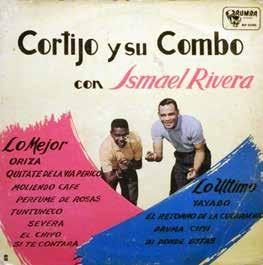
Severa estaba desesperada. Tenía más clientes que antes de la canción pero la trataban mal; se reían de ella y la menospreciaban después que consumaban su propósito. Ya ella había tratado, sin éxito, de escapar de la reputación que había adquirido antes de la canción, mudándose con el negro Magú de Santurce a Río Piedras, y ahora, gracias al dichoso disco, la única opción que le quedaba, la única que garantizaría el deseado aislamiento, era irse a vivir a una cueva. Era una opción falsa pues necesitaba a sus clientes para cumplir con sus obligaciones, tener un techo sobre su cabeza y poner comida sobre la mesa. El negro Magú no contribuía en nada. Se había ofrecido para sacarla del Alto del Cabro solo para explotarla. Ese problema ella lo resolvió, pero de forma inesperada y espeluznante.
Así estuvo Severa por dos años y medio. Trabajaba doce horas a diario, acostándose con seis clientes al día, uno cada dos horas. Cobraba a base de una escala, bajando de precio según el menú de cada sesión, que iba de lo más elaborado a lo más básico. Las prácticas perversas costaban más. Las más simples recibían un descuento. Los precios fluctuaban entre los veinticinco y los doscientos pesos. Quien pagaba doscientos gozaba de toda la gama de prácticas y posiciones que se podían ejecutar en una hora y cuarenta y cinco minutos. Severa necesitaba quince minutos entre cliente y cliente para recuperar el aliento y refrescarse. Severa quería que su relación con Magú fuese como la de Toni Lagarde y Lala Solórzano en Le dedico mi silencio, la última novela de Vargas Llosa. Esa unión había desafíado el prejuicio racial y de clase en Perú. Toni y Lala se amaban a pesar de los pesares impuestos por la sociedad. En el caso de Severa y Magú, habían varios obstáculos que la relación no podía superar. Para empezar, ambos eran negros. Además, los dos pertenecían al mismo estrato social. Lala era negra como Severa, pero no era prostituta. El problema de Lala era ser pobre y eso a Toni no le importaba. Magú usó la pobreza de Severa para sacar ventaja. No la había sonsacado a pesar de su pobreza sino más bien a causa de ser pobre y por ende necesitada. Magú nunca la hizo feliz, contrario a lo que Toni hizo con Lala. Le proveyó protección y una casa un poco más cómoda que el apartamento en El Alto del Cabro, pero el costo fue grande. Eventualmente, dejó de protegerla como debía. La comodidad de la casa se hizo pequeña pues no era una función exclusiva del espacio.
continued on next page
El obstáculo mayor era que en Puerto Rico el racismo era orgánico, subyacente. Eso hacía posible que una madre negra casada con un blanco le prohibiera a su hijo blanco casarse con una negra. O que le hermana de un negro lo insultara diciéndole “mono” y “negro angolo” cuando peleaban. En Puerto Rico, a la gente le daba asco ver a dos hombres besándose. En contraste, a pesar del racismo, si una pareja era mixta, antes de que la unión se consumara podía haber oposición, pero si era un fait accompli, no había más remedio que aceptarla, tal y como sugería la frase, y nadie chistaba. No, nadie decía nada a viva voz, pero la actitud sub rosa era negativa e hipócrita. Una pareja de negros no disfrutaba de las ventajas de una pareja mixta, especialmente cuando el hombre era blanco y pudiente, como era el caso de Toni con Lala. La música había unido a Toni y Lala; Magú se había interesado en Severa por motivos pecuniarios. A ella la música la trató mal. Fue a través de la canción interpretada por Cortijo que su negrura había sido puesta de relieve, más allá del bochincheo de conocidos y clientes, con motivo de mofa y para insinuar que era fea y amenazante. Era un caso de racismo claro. Su caso no era el único. En la música, el ejemplo supremo de racismo naturalizado al punto de parecer inofensivo, era el de Rafael Hernández, quien en su canción “Preciosa” condenaba al tirano que subyugaba a Puerto Rico por su “negra maldad”, exaltaba la noble hidalguía de España y el fiero cantío del indio bravío a la vez que ignoraba la contribución de África al acervo cultural excepto por una referencia endeble a la hermosura de las “hembras trigueñas” de la isla. En la canción de Severa, no por ser simbólico el racismo era menos evidente. Decir que tenía la cara como una pantera, connotaba amenaza, pero también sensualidad salvaje, lo cual para los católicos era un atributo deleznable. Para un católico, el problema no era tanto la negrura, aunque también podía serlo, como lo era la animalidad. Y la animalidad era un atributo de la negrura. “Déjame quieta mono”, decía la misma Severa cuando el Negro Magú la molestaba. Según Octavio Paz, el amor comienza “con la admiración ante una persona, lo sigue el entusiasmo y culmina con la pasión que nos lleva a la dicha o al desastre.” En su ensayo La llama doble, él explora la conexión entre el sexo, el erotismo y el amor y temprano en el ensayo comete un error cuando dice que “la metáfora sexual, a través de sus infinitas variaciones, dice siempre reproducción”. La canción de Severa desmentía esa aseveración. Ahí no había reproducción para nada, todo era pura sensualidad, puro deseo. Verle la cara a Severa era disfrutar de su sexo, negro como la cara de una pantera.
Paz dice que cuando se saca a la reproducción de la ecuación, comienza el erotismo. Eso suena bien, pero en los hechos el erotismo no excluye a la reproducción pues ésta puede estar al acecho. Él alega que el erotismo es “sexo en acción”, cuando que en realidad el erotismo es el que actúa, no el sexo; es decir, es el sexo quien es erotismo en acción. Otra cita: “El acto erótico se desprende del acto sexual: es sexo y es otra cosa”. Pero no es así. Es lo erótico lo que guía al sexo, no al revés, excepto en el caso de la prostitución, donde el sexo es puro sexo, sin erotismo ni reproducción. Es por ello que cuando Severa atendía a sus clientes, la única que salía ganando del sexo era ella, aunque su ganancia era mayormente económica. Y digo “mayormente” porque es posible que de vez en
cuando también sintiera placer.
En su estudio sobre el erotismo, Georges Bataille dice que las mujeres y los hombres son objetos del deseo por partes iguales. No obstante, según él, los hombres siempre se toman la iniciativa en cuestiones relativas al deseo y las mujeres solo usan su poder sexual para estimular el deseo en los hombres. Una consecuencia de esto es la prostitución: “No todas las mujeres son prostitutas potenciales”, dice Bataille, “pero la prostitución es la consecuencia lógica de la actitud femenina” que consiste en que “se ponen a la disposición del deseo agresivo de los hombres” al actuar como objetos del deseo. Oy Vega.
La prostitución, añade, conlleva una vida dedicada a la transgresión. Se trata de una conducta que viola constantemente el tabú sexual y que en los tiempos modernos se exhibe sin vergüenza y con cinismo. Pero esto es así, dice Bataille, solo en la forma más baja de la prostitución. En el resto de los casos, la vergüenza es la aceptación del tabú sexual que, aunque violado, sigue inscrito en la consciencia de la mujer para que así sienta que es humana. Según esa línea de pensamiento, no hay diferencia alguna entre una colonia nudista, donde la vergüenza ante el sexo destapado no existe, y un corral de puercos.
Severa tenía el tabú sexual internalizado hasta la médula de sus huesos, pero la canción la representaba despojada de su humanidad, reducida a la categoría de animal, cuyo símbolo era la imagen de la pantera. El problema no era meramente que la redujeran a esa categoría pues la animalidad tenía su atractivo, como por ejemplo, cuando a una mujer o a un hombre le brillaban los ojos o salivaban desmesuradamente cuando decían que querían o le ofrecían “follar como animales”. El problema era basar el desprecio a la animalidad en la presunción de que la categoría de “humano” tenía “un valor moral intrínseco inaccesible a los animales que colocaba a la humanidad por encima de ellos moralmente hablando”. Esa presunción tenía como base la idea de que Dios había creado a los seres humanos a su imagen y semejanza, la cual convertía a los animales, contrario a la visión paradisíaca del Jardín del Edén, en criaturas repugnantes. Para degustar la “pantera” de Severa, había que dejar de ser humano. A la misma vez, ella dejaba de ser humana por tener en su cuerpo una cualidad de animal salvaje, negra y en espera, abierta a la agresividad del deseo de los hombres. En su estudio, Bataille, alega que la prostitución causada por la pobreza extrema absuelve a sus practicantes de la adhesión estricta a los tabús sexuales. Reclamando que solo la pobreza extrema del lumpen-proletariado le exime de observar los tabús que constituyen su humanidad, hace una distinción entre pobreza y pobreza extrema. Si Severa hubiese conocido el trabajo de Bataille, podría haber usado la distinción como un salvoconducto para desmentir su alegada condición de animal salvaje. Podía alegar que como sus transgresiones sexuales no eran causadas por la pobreza extrema, éstas no la hundían en la desesperanza que causaba la caída en el pozo del salvajismo animal. Entonces, el argumento en su defensa podía ser que la transgresión de la prostitución no corrompía su alma siempre y cuando se sintiera avergonzada, lo cual era posible en la pobreza pero imposible en la pobreza extrema.
continued on next page
Con la Música a Otra Parte: Severa continued from page 9
Como nadie sabía lo que sentía excepto ella, su atributo de humanidad quedaba confinado en su consciencia. Nadie pensaba que ella podía sentirse avergonzada de ser prostituta y así, su imagen, amplificada por la radio, radio bemba, y la televisión cuando Cortijo tocaba “Severa” en el Show del Mediodía, estaba restringida a lo que sugería la canción. Eso a ella la mortificaba pero era una situación que no podía cambiar. Lo que sí podía cambiar era su situación con el negro Magú. De eso se fue dando cuenta poco a poco, a medida que la desconsideración de Magú aumentaba. Fue un proceso lento que confirmaba la aseveración de John Locke de que antes de que un pueblo se rebele tiene que estar sujeto a un largo tren de abusos y privaciones.
El crimen racial en Puerto Rico no es tan frecuente como en Estados Unidos pero existe. Hay quienes piensan que su incidencia es masiva pero solo citan dos o tres casos que encima son malos ejemplos del racismo estructural que supuestamente ilustran. Durante la época de Severa, el de Adolfina Villanueva Osorio, que alegadamente marcaba un hito en la incidencia de violencia racial en Puerto Rico, estaba por ocurrir. ¿Era el tratamiento abusivo de Magú, ejemplo de violencia racial por debajo de la mesa? ¿Podía decirse que la falta de representación racial en las estructuras de poder en la isla o la presencia desproporcional de los negros en las categorías ocupacionales más bajas, eran ejemplos de violencia racial simbólica o velada? Severa era negra, pobre y prostituta. ¿Era prostituta por ser pobre o por ser negra? Esa misma pregunta podía hacerse en el caso de Adolfina—¿la habían matado por ser negra o por ser pobre y rebelde?—, pero para hacerla había que esperar hasta después de febrero del año de 1980. Catorce años después de su muerte, Tite Curet ofreció esta respuesta a través de la voz de Rubén Blades: “Cuerpo acribillado, qué lección encierras, para el pobre el cielo, pa’l rico la tierra”.
Severa se quejaba de Magú por ser machista, desconsiderado, explotador y parásito. No obstante, él nunca le puso una mano encima. A pesar de eso, ¿podía decirse que la relación estaba marcada por una especie de violencia racial? Severa nunca se quejó de él haciendo ese alegato. A fin de cuentas, ella no necesitaba sentir que su maltrato era una forma de violencia racial para detestarlo ni para dar fin a su abuso de una vez por todas. Quizás Severa llegó a pensar de ese modo pero no había constancia. A veces las razones de una acción se pueden inferir a base de su trasfondo y circunstancias pero eso era difícil en el caso de Severa. De otra parte, si una madre negra podía rechazar a su futura nuera por ser negra, ¿podía el resentimiento de Severa ser mixto? ¿Una mezcla de rabia por el abuso de Magú y de internalización por parte de una negra del odio racial contra los negros? Si todos somos producto de nosotros y nuestra circunstancia, ¿podía un negro racializarse a sí mismo? Si eso era una forma de culpar a la víctima, cuya víctimización era en realidad totalmente impuesta desde afuera, ¿que pito tocaba entonces en el destino de la gente la capacidad de agencia que supuestamente era intrínseca a los seres humanos?
El 6 de febrero de 1966, después de atender a ocho clientes, Severa llegó a su casa exhausta. Ese día dispuso de algunos mucho antes del tiempo que duraba cada sesión si el cliente pagaba por todos los hierros y un alicate. Usó el tiempo sobrante para acomodar a dos más que la cuota usual. En la casa, Magú estaba tirado en el sofá
mirando la televisión. El tipo no lavaba ni planchaba, no hacía la compra, ni cocinaba. Fumaba tres cajas de cigarrillos al día y nunca limpiaba los ceniceros ubicados en cada parte de la casa donde anidaba. Bebía cerveza y no se molestaba en botar las latas vacías en el zafacón. Nunca lavaba el inodoro y siempre dejaba el asiento levantado. Tampoco limpiaba la ducha. Se quejaba de Severa constantemente. A cambio de mantenerlo se suponía que él la protegiera pero hacía un tiempito que ni con eso cumplía. Severa estaba harta. Cuando lo veía le daban ganas de vomitar y se consumía de rabia. Ese día de febrero, mientras se ponía cómoda después del largo día de trabajo, él le preguntó con un grito que cuándo iba a cocinar, que estaba muerto de hambre. Ella no le hizo caso. Entonces, alzando la voz más todavía, le dijo: “¡Mira negra sucia, no me ignores que te estoy hablando!”
Severa caminó del cuarto a la cocina, cogió un cuchillo de cortar carne, se acercó a Magú y le espetó el cuchillo en un ojo. Un chorro de sangre le bañó la cara. Como la hoja del cuchillo era triangular, a medida que lo hundía la herida se abría más. Gritando como un loco, Magú agarró el cuchillo por el filo y al retirarlo Severa le dio tremendo tajo en la mano. Sin pensarlo dos veces le enterró el cuchillo en el pecho y le dio vueltas hasta que se le llenaron los pulmones de sangre. Recordó la tragedia de su amiga Elena Rodríguez—la “Reina del Arrabal” cuyo rostro había sido mutilado por su novio sinvergüenza—, y como si estuviera canalizando su espíritu de venganza, le cortó la cara. Magú murió con la boca abierta tratando desesperadamente de respirar. El ojo bueno quedó desorbitado, que parecía que se le iba a salir, como el de una vaca cagona. Severa estaba como en un trance. La rabia la había hipnotizado y le metió la primera puñalada a Magú sin pensarlo. Siguió así, como una máquina, destrozándole el corazón y asfixiando sus pulmones, para después darle dos tajos en la cara. Cuando recuperó el sentido, se fue al baño para limpiarse la sangre que tenía en la cara y las manos. Puso el cuchillo en el mostrador de la cocina sin lavarlo. Entonces llamó a la policía y después prendió el tocadiscos y lo puso a to’ volumen, escuchando absorta como si el estrépito musical le ayudara a recobrar su aplomo, a sentirse calmada en contraste con el estruendo de la canción que se oía por todo el vecindario. Miró el cuerpo inerme de Magú con cara de te jodiste pero tú mismo te lo buscaste. Cuando los policías entraron a la casa alcanzaron a escuchar a Ismael Rivera soneando la frase, “Trácala mandrácala que ella cae, maribelemba que ella cae Severa”. Esposaron a Severa, bajaron un poco el volumen del tocadiscos y siguieron escuchando a Cortijo, esperando que llegara la morgue para llevarse el cadáver
JOSÉ EDGARDO CRUZ FIGUEROA (cruzjose5319@gmail.com) es natural de San Juan y criado en El Fanguito y Barrio Obrero en Santurce, Puerto Rico. Es profesor emérito de ciencias políticas en la Universidad del Estado de Nueva York en Albany.

By JOHN VASQUEZ MEJIAS • NEW YORK, NY | UNION SQUARE & CO
| May 14, 2024 | 112 pages

Overview
Rendered in gorgeously carved wood blocks and buffeted with historical supplemental material, John Vasquez Mejias’s The Puerto Rican War tells the story of the the 1950 insurrection on the island that resulted in 38 deaths and a failed assassination attempt against President Harry S. Truman. Told as a fable, in which the leaders of the movement are visited by the ghosts of Michael Collins and Gandhi, this book showcases an important and often overlooked moment in American history and a historical touchstone for the Puerto Rican independence movement.
Reviews
“The woodblock method lends density and gravitas to the work that command attention; each centimeter of each panel is rich in visual detail, inviting readers to linger over the page….A brilliant blend of graphic and literary narration and a lovely work of art in itself.”
Kirkus, STARRED Review
“Mejias’s painstakingly hand-carved woodblock art results in vibrant, detailed scenes that lend a poetic touch throughout. This impressive work of art brings history to full and fascinating life.” —Publishers Weekly, STARRED Review
“Each page of this elegant, agit-prop stylized, confrontational yet nuanced account of the 1950s Puerto Rican independence movement is printed from painstakingly hand-carved woodblocks. It took Mejias a decade to create this art object—cutting into the negative space to reveal history more often swept away. I’ve been a fan of Mejias’s since I first (many years ago) picked up his zine Paping. It’s cheering to see the dedication he puts to his craft respected in such a high-quality hardcover release.”—Publishers Weekly
“This is a story most people today have forgotten, but one full of fascinating people and riveting events. The graphic format makes this history accessible to today’s readers, whether in school or out.”—We Are Teachers
About the author
JOHN VASQUEZ MEJIAS is a visual artist and high school art teacher in the Bronx. He regularly produces zines, comics and performs hand-crafted puppet shows and theater events based on The Puerto Rican War and other subjects. The self-published version of The Puerto Rican War is in the permanent collection of the Metropolitan Museum of Art Library. https://www.johnvasquezmejias.com
por RAQUEL ROSARIO RIVERA • PUERTO RICO PUBLICACIÓN INDEPENTIENTE | Enero 1, 2024
Estudia el proceso revolucionario de Saint Domingue (Haiti) durante 1791-1850. Presenta las medidas legales tomadas por la autoridades frente a la ola de migraciones durante este periodo. Incluye dos Registros de la de los hatianos y la de otras nacionalidades que llegaron a Puerto Rico como resultado de esa revolución. Incluye los fondos documentales donde se encuentran.

RAQUEL ROSARIO RIVERA ha publicado cinco libros entre estos “La Real Cédula de Gracias de 1815 y sus primeros efectos en Puerto Rico” (1995), (First Book Publishing). Con “María de las Mercedes Barbudo, primera mujer independentista de Puerto Rico 1773-1849” (1997) vino a despertar un interés genuino en el estudio de la mujer puertorriqueña.
En el año 2000 publica (como editora) “La llegada del cíclope: percepciones de San Ciriaco a cien años de su visita” (Fundación Puertorriqueña de las Humanidades) y luego complementando los estudios genealógicos y la historia se le comisionó, por el Municipio Autónomo de Caguas, el libro histórico familiar Primeras familias pobladoras de Caguas (2005).
En febrero 2015 publicó el libro La presencia dominicana en el Puerto Rico de 1791-1850

BY STEPHANIE L. CANIZALES • ALBANY, NY | UNIVERSITY of CALIFORNIA PRESS | August
2024 | 338 pages

Overview
Each year, thousands of youth endure harrowing unaccompanied and undocumented migrations across Central America and Mexico to the United States in pursuit of a better future. Drawing on the firsthand narratives of migrant youth in Los Angeles, California, Stephanie L. Canizales shows that while a lucky few do find reprieve, many are met by resource-impoverished relatives who are unable to support them, exploitative jobs that are no match for the high cost of living, and individualistic social norms that render them independent and alone. Sin Padres, Ni Papeles illuminates how unaccompanied teens who grow up as undocumented low-wage workers navigate unthinkable material and emotional hardship, find the agency and hope that is required to survive, and discover what it means to be successful during the transition to adulthood in the United States.
Review
“Drawing upon meticulous research, Stephanie L. Canizales captures the heart-wrenching transitions and unwavering spirits of unaccompanied immigrant youth with profound empathy. Sin Padres, Ni Papeles illuminates the challenges and adaptations these young people face, offering a compelling call to reexamine our policies and attitudes toward these most vulnerable members of our society. A must-read!”—Carola Suárez-Orozco, Harvard Graduate School of Education
“Canizales develops a deeply engaging portrait of her participants to provide a sobering account of the lives of unaccompanied Central American minors who are aging into adulthood without the support of parent-led households or K-12 schools. Sin Padres, Ni Papeles will soon become a

staple in the field of undocumented migration.”—Laura E. Enriquez, author of Of Love and Papers: How Immigration Policy Affects Romance and Family
About the Authors
STEPHANIE L. CANIZALES, PhD, is a researcher, author, and professor in the Department of Sociology at the University of California, Berkeley, where she is Faculty Director of the Berkeley Interdisciplinary Migration Initiative. She earned her PhD in Sociology from the University of Southern California (2018).

bY ISABEL MARTÍNEZ, IRMA VICTORIA
SOTOLONGO, NICHOLAS DANIEL NATAVIDAD & ÁNGEL DAVIS NIEVES (EDITORS)
ALBANY, NY | STATE UNIVERSITY OF NEW YORK PRESS | June 1, 2024 | 266 pages
Overview
Crossing Digital Fronteras is about liberatory possibilities and digital technologies in the classroom. The book centers critical Latinx Digital Humanities to illustrate the ways college faculty and Latinx students harness digital tools to engage in “messy” yet essential active learning and knowledge production in Hispanic-Serving Institutions (HSIs) and Latinx Studies courses. With increasing Latinx student enrollment and a growing need for the humanities in our complex world, it is essential that HSIs and instructors integrate twenty-first-century tools into their teaching practices to truly “serve” Latinx students and communities. This book definitively inserts Latinx Digital Humanities into broader conversations about best practices at HSIs, on the one hand, and digital humanities and social justice, on the other. Most importantly, it provides practical examples of innovative, rehumanizing digital pedagogies that give students the liberatory learning they deserve.
Review
“Crossing Digital Fronteras speaks directly to how digital tools can be used in the effort to rehumanize education for Latinx students, a community that, as the editors point out, has been the target of racist and xenophobic discourse. Engagingly and accessibly written, the volume makes an important and timely intervention in the field of education, particularly with respect to the growing literature on decolonial education, Latinx students in higher education, and ‘servingness’ in Hispanic-Serving Institutions.”
-- María Eugenia Cotera, coeditor of Chicana Movidas: New Narratives of Activism and Feminism in the Movement Era.
About the Authors
ISABEL MARTÍNEZ is an Associate Professor of Sociology and Anthropology and Cultures, Societies, and Global Studies and Director of Latinx, Latin American, and Caribbean Studies at Northeastern University. She is the author of Becoming Transnational Youth Workers: Independent Mexican Teenage Migrants and Pathways of Survival and Social Mobility. IRMA VICTORIA MONTELONGO is Associate Professor of Instruction and Director of the Chicano Studies Program at The University of Texas at El Paso. NICHOLAS DANIEL NATIVIDAD is Associate Professor of Criminal Justice at New Mexico State University. ÁNGEL DAVID NIEVES was Dean’s Professor of Public and Digital Humanities and Director of the Humanities Center at Northeastern University. He authored An Architecture of Education: African American Women Design the New South.



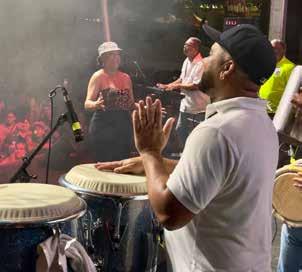








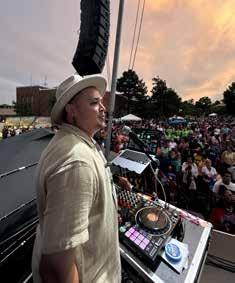





Homenaje a Tommy Olivencia, Chamaco Rivera y Roberto Roena Agosto 11, 2024 - Riverfront Park, Springfield
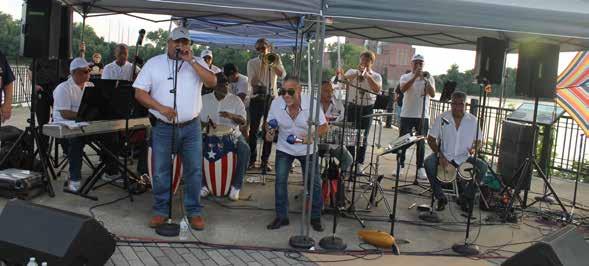
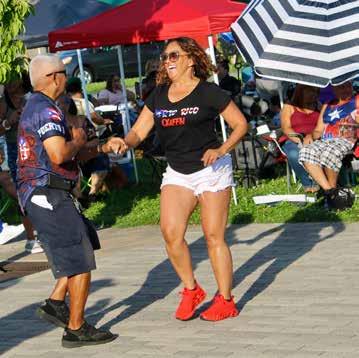






McNally Field (Parque de la Flats) - Agosto 17, 2024









